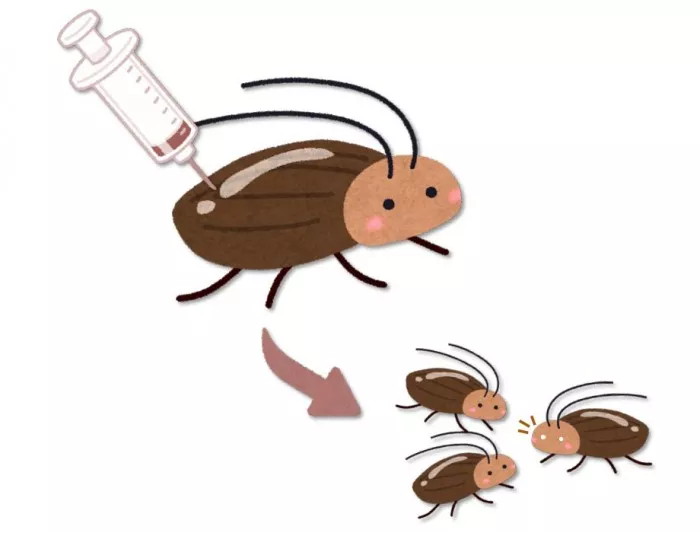According to a paper published by the cell press in the journal Cell reporting method on May 16, 2022, the researchers designed a crispr-cas9 technology to realize the gene editing of cockroaches. This direct and effective "direct parent" CRISPR (dipa-crispr) procedure involves injecting material into the developing female adult of the egg, rather than into the embryo itself.

"In a sense, insect researchers have been freed from the hassle of injecting eggs," said senior research author Akira daemun of Kyoto University. "We can now edit insect genomes more freely and freely. In principle, this method should be effective for more than 90% of insect species."
"By improving the dipa-crispr method and making it more effective and universal, we may be able to achieve genome editing in almost all species of more than 1.5 million insects, opening up a future in which we can make full use of the magical biological functions of insects."- Damen Xiaoming
Current insect gene editing methods usually require microinjection of materials into early embryos, which seriously limits its application in many species. For example, due to the unique reproductive system of cockroaches, previous studies have not realized the genetic manipulation of cockroaches. In addition, insect gene editing often requires expensive equipment, specific experimental devices for each species, and highly skilled laboratory personnel. These problems of traditional methods have plagued researchers who want to edit the genome of various insect species.
To overcome these limitations, Damon Xiaoming and his collaborators injected cas9 RNA proteins (RNPs) into the body cavity of adult female cockroaches and introduced heritable mutations in developing eggs. The results show that the efficiency of gene editing -- the proportion of edited individuals in the total number of incubated individuals -- can reach 22%, and dipa-crispr can reach more than 50%. In addition, researchers produced knockout cockroaches by CO injection of single stranded oligonucleotides and cas9 RNPs, but the efficiency is very low and needs to be further improved.
The successful application of dipa-crispr in two species that are evolutionarily far apart shows its potential for wide use. However, this method is not directly applicable to all insect species, including fruit flies. In addition, experiments show that the most critical parameter for success is the stage of injected adult females. Therefore, dipa-crispr needs to have a good understanding of ovarian development. Given the diversity of insect life histories and reproductive strategies, this can be challenging in some species.
Despite these limitations, dipa-crispr is available, highly practical and can be easily implemented in the laboratory, extending the application of gene editing to a wide range of model and non model insect species. This technology requires only the smallest adult injection equipment, and only two components - cas9 protein and unidirectional RNA, which greatly simplifies the procedure of gene editing. In addition, standard cas9 can be used for adult injection, eliminating the need for time-consuming protein customization engineering.
"By improving the dipa-crispr method and making it more efficient and universal, we may be able to achieve genome editing in almost all species of more than 1.5 million insects, opening up a future where we can make full use of the amazing biological functions of insects," said Damon Xiaoming. "In principle, it is possible for other arthropods to use similar methods for genome editing. These animals include agricultural and medical pests, such as mites and ticks, as well as important fishery resources, such as shrimp and crab.".